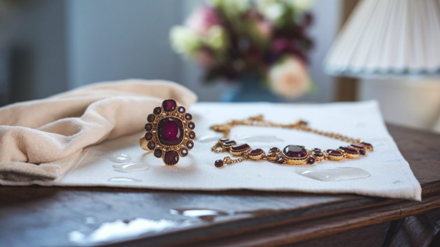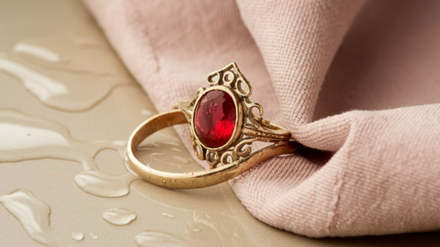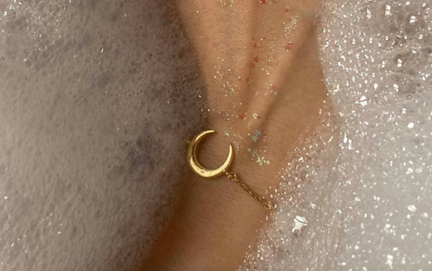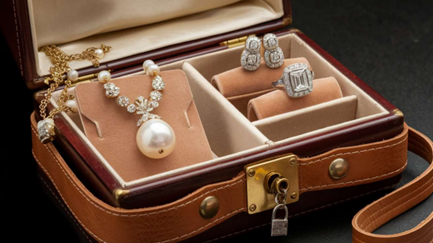We all love vintage jewelry, don’t we? There’s something magical about wearing a piece that’s stood the test of time. But here’s the thing: those beautiful rings, necklaces, and earrings need a little TLC to keep looking their best. If you’ve ever wondered how to clean vintage jewelry without ruining it, you’re in the right place. Proper care not only helps them sparkle but also keeps them safe from damage. Let’s dive into how you can give your vintage treasures the attention they deserve!

Vintage jewelry isn’t just about style; it’s about preserving a piece of history. Over time, these treasures can accumulate dirt, oils, and tarnish, which can dull their shine and even cause damage. Regular cleaning helps maintain the integrity of the metals, stones, and craftsmanship and can ensure they stay as beautiful and valuable as ever. Without proper care, your favorite vintage pieces might lose their charm or suffer irreversible wear.
Now that we understand why cleaning is important, let’s take a look at how to clean antique jewelry safely to keep those treasures sparkling for years to come.
Before diving into the actual cleaning process, you should always start by checking your vintage jewelry for dust, dirt, or residue. In addition to using a basic soft brush, this part will guide you on how to clean antique jewelry at home with the right solutions, professional tools, and step-by-step instructions.

Cleaning antique costume jewelry can be a bit tricky, but don’t worry, I’ve got you covered! First things first, be super careful with foil-back gems—water can ruin them. Instead, you can just grab a damp cloth and gently wipe around them. If your jewelry smells a bit metallic, you can freshen it up by misting it with a mix of water and white vinegar, then pat it dry with a soft cloth.
For a deeper clean, soak your jewelry in equal parts water and lemon juice for about 10–15 minutes. If there’s still some tarnish hanging around, mix up a paste of salt, vinegar, and white flour. Lastly, you may apply it with an old toothbrush, let it dry, and then gently brush off the flakes. Your costume jewelry will look brand new!
The easiest way to clean antique rhinestone jewelry is to dry clean it with a microfiber cloth. You can check if it’s faint from dirt or stubborn stains. This method helps remove surface oil and buildup without causing any damage. However, never soak rhinestone jewelry in water, ammonia, or a cleaning solution, as the foil backing can be ruined by moisture.
If you need a deeper cleaning, mix a small amount of mild dish soap (about 1 teaspoon) with warm water. Then use a soft cloth or cotton swab to carefully clean the rhinestones. Always avoid harsh chemicals like chlorine, perfumes, or hairspray, as they can damage the stones and affect their shine.
For light stains or dirt, you may start by mixing a solution of warm water and a few drops of mild dish soap—aim for about 1 teaspoon of soap to 1 cup of water. Then dim it with soft cloth to remove any buildup on the brass.
For stubborn tarnish, on the other hand, you may mix a paste with 2 parts baking soda and 1 part water. Then apply the paste to the tarnished areas with a soft cloth, gently rubbing in circular motions. After cleaning, rinse with clean water and dry it thoroughly with a soft cloth. To finish, buff the brass lightly to restore its natural shine. How? You can just use a soft, dry cloth or a microfiber cloth to rub the surface in circular motions again!
Don't use dish detergent! You can use a specialized pearl cleaner due to pearl's dedicateness. Instead of scrubbing, gently dab or wipe the pearls with a cloth, and avoid getting the metal setting too wet. After cleaning, air dry it or buff it. Always remember, the focus with pearls is on gentleness—avoid any harsh chemicals or tools that could damage the delicate surface.

For simple cleaning, just mix warm water with a drop of mild dish soap. This works great if your piece doesn’t have gemstones. If the tarnish is tougher, you can try a little ammonia diluted in water, but be careful—ammonia is strong and can damage the gold if left on for more than a minute or two.
Honestly, it's safer to use a professional cleaner made specifically for gold or platinum. After cleaning, rinse thoroughly with water and dry with a soft cloth. And the best part? You can use the same method to clean platinum jewelry too! Just remember, always be gentle with these precious metals.
Extra care for antique silver jewelry is needed as it is soft. You can prepare a simple cleaning solution: a small amount of baking soda with water to create a paste. Then gently apply the paste using a soft cloth or cotton swab, being cautious not to scrub too hard, as silver can scratch easily.
For tarnish, let the paste sit for a few minutes, then gently wipe it off with a damp cloth and then dry it with a clean cloth. This method works well for most antique silver, but be cautious with pieces that have delicate details or gemstones.
How often you clean your vintage jewelry depends on how frequently you wear it and the environment it's exposed to. If you wear your pieces daily, especially if they come in contact with cosmetics, oils, or perfumes, cleaning every 2–3 weeks is a good rule of thumb. For jewelry worn less frequently, cleaning every 2–3 months should suffice.
It's important to avoid a few common mistakes to ensure your pieces stay in top condition when you clean vintage jewelry. Here are some key things you should never do:

Learning how to clean old jewelry is crucial, but routine maintenance is even more essential. Here are some helpful tips for the beauty and durability of your treasured jewelry.

1.Store Jewelry Properly: You may keep pieces in individual soft pouches or lined boxes to prevent scratches. Metals like silver can tarnish faster if exposed to open air or humidity.
2.Avoid Direct Contact With Chemicals: Perfumes, hairsprays, and household cleaners can dull finishes and damage stones. You can apply cosmetics before wearing jewelry to minimize exposure.
3.Clean Periodically: You may clean frequently worn pieces, like rings or bracelets, every 2–3 weeks to remove oils and dirt. For rarely worn items, a gentle cleaning every 2–3 months is sufficient.
4.Remove Jewelry During Activities: You should take off pieces before swimming, exercising, or cleaning. Chlorine in pools or sweat from workouts can erode metals and loosen gemstones.
5.Inspect for Wear and Tear: Check clasps, prongs, and settings regularly for damage. Loose gemstones or weakened settings should be addressed immediately by a professional jeweler to avoid loss.
Cleaning vintage jewelry doesn’t have to be complicated, and with the right approach, you can keep your pieces looking as beautiful as the day you got them. Remember, a little care goes a long way! So, now that you know how to clean vintage jewelry, why not give your favorite pieces a little love? Trust me, they’ll thank you for it!
Yes, vintage jewelry should be cleaned regularly to preserve its beauty and prevent dirt, oils, and tarnish from degrading its quality.
Jewelry is generally considered vintage if it is at least 20 years old but less than 100 years old.
Vintage jewelry can hold or even increase in value depending on its rarity, condition, and desirability in the market. Proper care can help retain its value over time.
This ultimate guide shows you how to repair jewelry at home with 6 simple tips. Learn to restore broken clasps, missing stones, elastic bracelets, and more!
Read MoreThis jewelry collection guide highlights the 10 best jewelry box options of 2025, featuring stylish, functional picks for travel, home, and every storage need.
Read MoreThis fashion guide reveals the best necklace to wear with turtleneck outfits, including top styles, lengths, materials, and expert tips for a chic look.
Read MoreThis stylish guide highlights the best travel jewelry case for 2025, helping you keep your accessories secure, organized, and ready for every adventure.
Read More